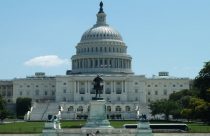March for Science Unites Scientists in 600 Cities Globally

Scientists and science advocates from all over the world met on April 22 to support research and evidence-based policymaking. For many of them, the March for Science—which was timed to coincide with Earth Day—was their first demonstration ever. The main location was Washington DC, where tens of thousands of people gathered to celebrate the importance of science, but more than 600 satellite marches took place around the globe as well. It is difficult to tell how many people participated worldwide, but calculations at ScienceInsider suggest 500,000 to 1 million as a reasonable guess.
Time to Act
The March for Science movement has many prominent supporters including the American Association for the Advancement of Science (AAAS), Nature, Wiley, the Max-Planck Society, and others. Although a part of the research community was worried that organizing a demonstration could turn scientists into another special-interest group, most of the participants and supporters of the March claimed to be defending science, not politicizing it.
They believe that the risks of remaining silent are too high, given the importance of collaborative research (which cannot be confined within borders) and the role of scientific evidence, which is essential for facing and solving global challenges related to climate, health, and education. In view of an alarming trend to discredit and restrict scientific discoveries, researchers cannot afford to remain silent anymore, the organizers say.
While most participants emphasized that they were not marching “against” anything or anybody but just “for” science, some of them did take the chance to criticize US President Donald Trump’s denial of climate change, his anti-vaccination claims, and the cuts to major research agencies, such as the National Institutes of Health (NIH), the National Science Foundation, the Department of Energy’s Office of Science, and the Environmental Protection Agency. These cuts are part of a plan to boost defense spending by $54 billion.
Keeping the Momentum Going
But did the March for Science succeed? Although it is probably too early to tell, it was a great experience for all those of us who participated—and a wonderful way to connect scientists with the community. The March for Science movement now wants to keep the momentum going, so more actions are planned. The next stage is an outreach to governors telling them to support science. Here’s a nice coverage of the March for Science at different locations around the world.









